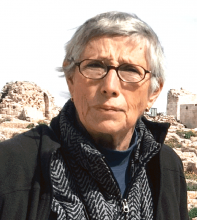You are here
The systematic unmaking of Gaza
Apr 16,2025 - Last updated at Apr 16,2025
Israel is systematically squeezing the 2.3 million Palestinians into less and less of the narrow coastal territory of Gaza. The UN has said Palestinians are being confined to about one-third of the Strip and that area is fragmented. A week ago, UN spokesperson Stephane Dujarric said that Israel had issued “two new displacement orders covering vast areas in northern and southern Gaza.” As these areas host "several medical facilities and storage sites containing critical supplies," he warned there could be “life-threatening consequences” for those in urgent need of care in these displacement zones within Gaza.
Additionally, the Israeli army has demolished homes, schools, mosques and industries and flattened fields to create an exclusion zone 800-1,500 meters wide on the Gaza side of the border with Israel. Palestinians who dare enter this zone are killed, according to soldiers who have taken part in creating the zone. Anonymous officers and soldiers told soldiers' rights group Breaking the Silence, "Israel launched a major military engineering operation that, by wholesale destruction, entirely reshaped about 16 per cent of the Gaza Strip." This zone comprises 55-59 square kilometres containing 35 per cent of Gaza's farmland and 3,500 buildings. An Israeli armoured corps warrant officer declared, "Essentially, everything gets mowed down, everything." He said the area looked like "Hiroshima” after the army had completed its operations.
Israel has surrounded and besieged Rafah city in the south of Gaza and ordered Palestinians to evacuate sectors of the Nuseirat refugee camp in central Gaza. They have been told to join the hundreds of thousands in al-Mawasi on the coast although there is no space for new arrivals. With the alleged aim of expanding Israel's security zone, the Israeli army has launched an operation in the Daraj Tuffah in Gaza City: this also means displacement for Palestinians who remain. For Israel "security zones" means systematically clearing Palestinians from specific zones.
Israel is constantly forging major changes in the geography and demographics of Gaza. Before Hamas' October 7th, 2023, attack on Israel, the buffer zone was 300 metres wide and there was limited access. Israel operates on the basis of an offensive-defensive strategy and, Israeli commentators argue, regards every Palestinian as an enemy.
Since Israel resumed air and ground operations more than 1,560 Palestinians have been killed in Gaza and 400,000 have been displaced. The UN reported that in 36 of the more than 225 Israeli strikes on Gaza only women and were slain. On Sunday, half an hour after Israel ordered all staff and patients to evacuate, Israel bombed Anglican-run Al-Ahli Hospital, formerly known as the Baptist Hospital, targeting "the surgical building and the oxygen station for intensive care units," Gaza's civil defence reported.
This bombing followed Israel's completion of the so-called Morag Corridor, named after the abandoned Morag settlement, which cuts off Rafah City from the south and Israe issued evacuation orders for Palestinians living in eight neighbourhoods of Khan Younes.
The UN agency for Palestinian refugees (UNRWA) chief Philippe Lazzarini told Al-Jazeera's UPfront that situation in Gaza as a “post-apocalyptic” killing zone.
Bombs and bullets are not the only weapons Israel is using. On March 2, two weeks before abandoning the two-month ceasefire, Israel halted all deliveries of food, water and medical supplies to Gaza. Israel's aim was to pressure Hamas to accept the extension of phase one of the January 19th rather than proceed to stage two. Hamas, however, insisted on progressing to stage two which involves the release all living Israeli hostages in exchange for Palestinian prisoners, Israel’s withdrawal from Gaza and the end of the war.
When agreeing to ceasefire, Israeli Prime Minister Benjamin Netanyahu made it clear that he would not shift to phase two and refused to enter into negotiations on implementation mandated during phase one. He never had any intention of halting the war after the ceasefire expired. He took this line because his two hard right coalition partners threatened to bolt the coalition if he did. Consequently, Israel has returned to its Gaza war to keep Netanyahu in office despite rising popular opposition to the war. The Israeli Democracy Institute found in January that 70 per cent of Israelis agreed to stage two and that this figure had risen to 73 per cent in February. Less than 25 per cent of Israelis favoured a return to fighting. Sixty per cent wanted Netanyahu to resign. This is Netanyahu’s war.
A week ago, the Israeli military threatened to fire air force reservists and retirees who signed an public letter condemning the war as serving political interests while failing to return the 59 hostages, half of whom are said to be dead. Retired Israeli air force pilot Guy Poran who launched the letter, told the Associated Press, "It’s completely illogical and irresponsible on behalf of the Israeli policy makers … risking the lives of the hostages, risking the lives of more soldiers and risking lives of many, many more innocent Palestinians, while it had a very clear alternative.” On the weekend, the reservists were backed up by 250 former internal security Mossad members, including chiefs Danny Yatom, Efraim Halevy, and Tamir Pardon and dozens of ex-officials.










Add new comment